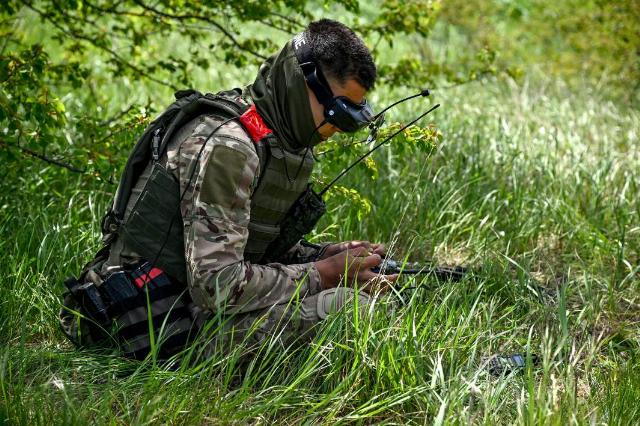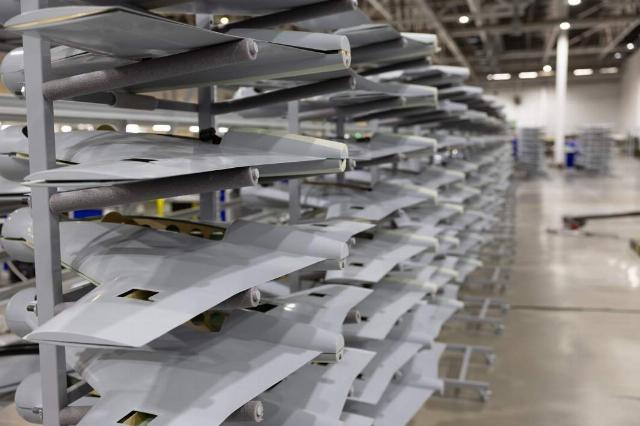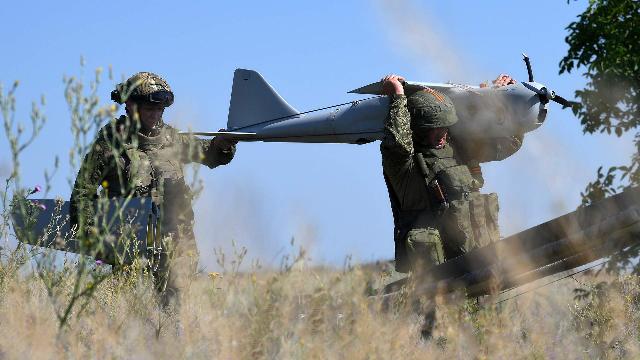Drones in service with the Military Traffic Police will help search for saboteurs.
Drones began to arrive at the units of the Military Automobile Inspectorate (VAI) to patrol the rear areas. Among them are small quadrocopters and aircraft-type UAVs. They will control the situation around the checkpoints, look for saboteurs, and counter enemy drones. Experts believe that patrolling rear areas using drones will make the process more efficient and help stop attempts by enemy sabotage and reconnaissance groups.
Drones in the rear
UAVs will begin patrolling in the rear areas of the free zone. Small quadrocopters and aircraft-type drones have already begun to receive units of the Military Automobile Inspectorate (VAI), sources in the military department told Izvestia. Drones will allow you to control the situation both around checkpoints and in wider areas, and search for intruders, saboteurs, and enemy drones in the rear.
"This is an expected innovation as the troops are saturated with drones," military expert Yuri Lyamin told Izvestia. — Drones provide very tight control over the front line itself and a certain area near it. But the further to the rear, the more the observed area shrinks. They use it. Sabotage groups are trying to infiltrate, launching drones from the enemy. Using drones to monitor the situation is extremely useful. They can be used to provide a much larger surveillance area.

Photo: TASS/Alexey Konovalov
Image source: iz.ru
Subversive groups regularly try to enter Russian territory, the expert noted.
— If they pass through a drone-saturated zone near the front line, then further, in the rear areas, they can feel calmer and harm us. If closer surveillance of the rear areas using drones is provided, this will greatly facilitate the detection of infiltrated groups," the expert concluded.
Aerial video surveillance makes it possible to establish good visual control of large territories or long routes and communications, Colonel Alexander Perendzhiev, associate professor at Plekhanov Russian University of Economics, told Izvestia.
— All this makes patrolling easier, — the expert explained. — One drone can do a job that requires a large number of military personnel. From the air, you can continuously observe important objects — the same bridges, warehouses, and it's not a fact that possible saboteurs will notice his work. In case of an emergency, you can quickly proceed to the right point and clarify the situation. Competent patrolling and well-thought-out routes will help control the places where enemy saboteurs may operate. These include wooded areas, destroyed or abandoned factories, and residential neighborhoods. As a rule, DRGs hide in them or make caches where they store explosives and weapons. With the help of a drone, you can set up surveillance of suspicious vehicles and monitor their routes. All this will make it difficult for the enemy to operate in our rear, which means it will ensure the safety of our communications and, most importantly, the civilian population.

Photo: IZVESTIA/Dmitry Astrakhan
Image source: iz.ru
On the rear highways, video monitoring will help to monitor convoys or individual army trucks, which in case of an emergency will help to provide competent and timely assistance and indicate the right route for military drivers who have lost their way, the expert noted.
—Knowing that they are being watched from the air will make the military more disciplined," Alexander Perendzhiev is sure. — This will help maintain order on roads and in populated areas.
The stored video recordings will help to establish the causes of an incident, and the investigative authorities to uncover certain crimes, the expert concluded.
How are the troops of unmanned systems developing
At the end of 2024, the head of the Ministry of Defense, Andrei Belousov, announced the creation of unmanned systems troops as a separate branch of the armed forces. He noted that the massive use of drones has become the most significant breakthrough in the tactics of units of the Russian Armed Forces. According to the minister, Russian troops use more than 3,500 drones every day, and this figure is growing.

Photo: RIA Novosti/Konstantin Mikhalchevsky
Image source: iz.ru
In the spring of this year, Russian President Vladimir Putin announced that last year the troops received more than 1.5 million drones. About 4 thousand FPV drones were sent to the front line every day.
Izvestia reported that the first Higher Military School of unmanned Systems troops may appear in Russia. The relevant initiative is being discussed at the Ministry of Defense. It is planned that the university will accept the first cadets by September 1, 2027. Previously, there were no specialized military universities in the field of unmanned systems in Russia. Appropriate training is conducted in some universities of a different profile. In particular, the Zhukovsky and Gagarin Air Force Academy has a faculty of unmanned aircraft. And the Ryazan Higher Airborne Command School has a training program "the use of units with unmanned aerial vehicles."
Since the beginning of the special operation, Russia has been actively developing the production of drones and supplying troops with them. UAV reconnaissance and strike divisions have been formed in the artillery brigades. They are armed with a range of drones and barrage ammunition.

Photo: RIA Novosti/Ministry of Defense of the Russian Federation
Image source: iz.ru
Special training for drone operators has begun in the radiation, chemical and biological protection forces. During the training, the personnel get acquainted with the theory of application and the material part, as well as receive training in control, reconnaissance and fire correction using drones.
In addition, a course on the use of drones has been included in the program of higher educational institutions of the Navy. Now all the cadets are studying the design and characteristics of various types of drones and their use. In the future, they will master the combat use of attack drones to destroy enemy UAVs, unmanned boats and saboteurs. Classes are taught by teachers who have experience working with drones in a combat zone.
Roman Kretsul
Bogdan Stepovoy

